Are you tired of using traditional wire stamping methods that are time-consuming and error-prone? Laser wire marking machines offer a solution to this problem.
These machines offer precision, speed, and efficiency in marking wires and cables. It makes them the perfect solution for industries looking to streamline their processes and reduce errors.
Say goodbye to smudged labels and hello to flawless marks with the help of Laser cable marking systems.
What is Laser Marking?
Laser marking is a non-contact, non-invasive method of marking materials without removing any material. It is a precise and efficient way to create permanent marks on various materials, including wires and cables.
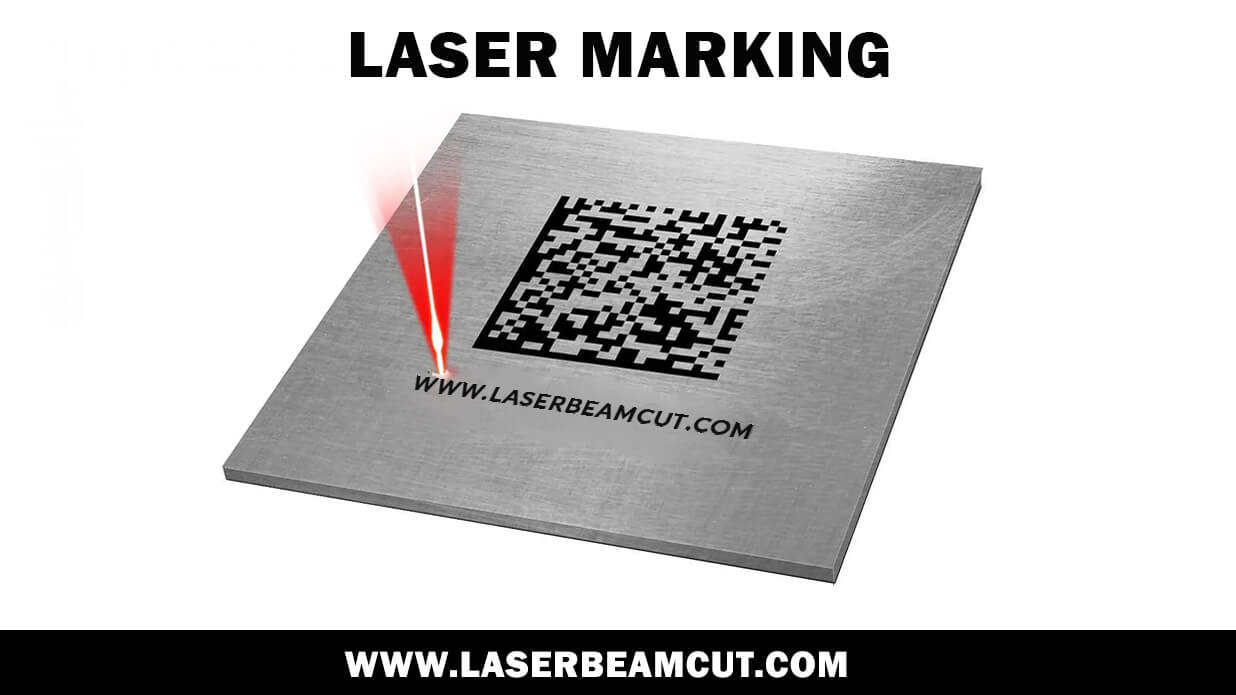
One of the main advantages of laser marking is that it does not change the chemical or mechanical properties of the material.
You can read our blog post to discover different laser marking types and their applications.
How Laser Wire Marking Machines Work:
Laser cable marking systems utilize a laser beam to label various materials, including wires, cables, and tubes. The focused laser beam creates a permanent mark on the surface.
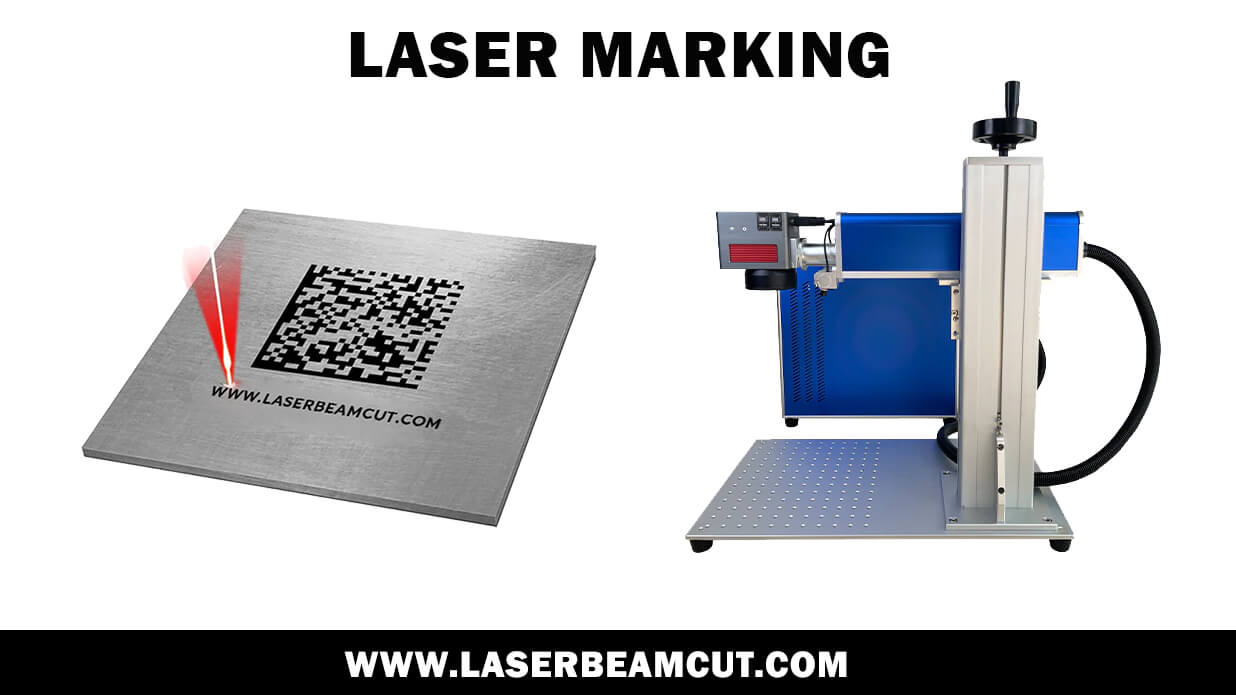
There are two main types of laser wire marking machines:
- Flying Fiber laser marking machines
- CO2 laser marking machines
- UV Laser Wire Marker
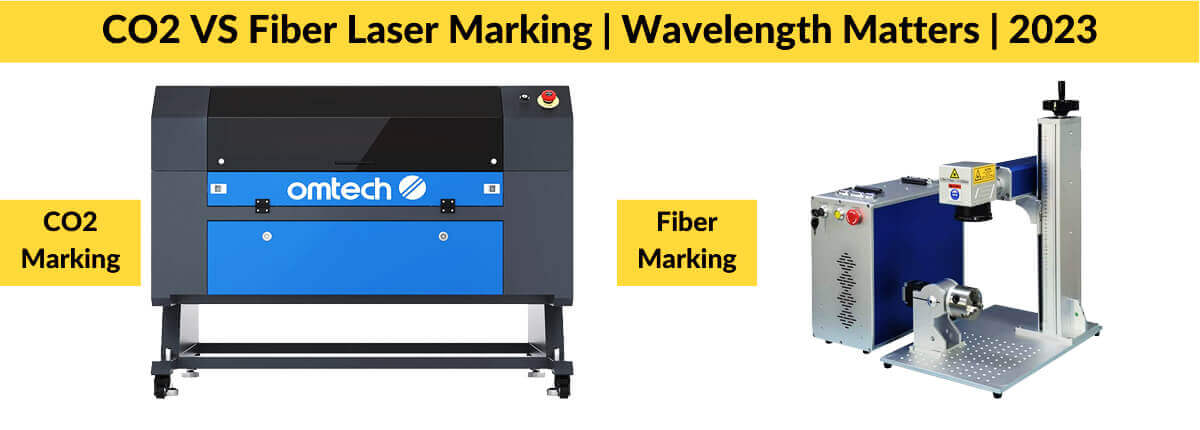
Flying Fiber laser marking machines
A flying fiber laser marking machine is a type of laser marking machine that uses a high-speed scanning system to label products as they move along a conveyor belt.
It allows for quick and efficient marking of products without the need for manual handling. Industries like automotive, electronics, and pharmaceutical commonly utilize flying fiber laser marking machines for high-volume production lines.
Features of a Flying Fiber Marker
- Ability to operate 24/7
- High marking speed and precision
- Low maintenance requirements
- Compatibility with a wide range of materials
- Automated marking process for increased efficiency
- Easy integration with other production line equipment
- Advanced software for customized marking designs and patterns
CO2 Laser Wire Marking Machines
A CO2 Wire marking technology is a type of laser marking machine that uses a carbon dioxide laser to label the surface of a material.
CO2 lasers are known for their ability to mark wire non-metal materials insulations, such as plastics, wood, and glass.
UV Laser Wire Marking Machines
A UV laser marking machine is a type of laser marking machine that uses a UV laser beam to mark and engrave materials. UV laser wire marker vaporizes the material, absorbing the laser beam and creating a lasting mark on the surface.
Why do you need Laser wire engraving machines?
In industrial applications, Laser wire engraving machines are crucial for identifying and tracing wires and cables. It involves using a laser beam to mark and engrave materials such as Wires, Cables, and Tubes with identifying information.
There are several reasons why Laser wire labeling equipment is necessary in industrial settings, including safety, reliability, and troubleshooting.
Safety:
Laser wire labeling equipment enhances safety by ensuring correct connections between wires and equipment, especially in high-voltage and high-current applications.
Laser marking provides clear and permanent identification, reducing the risk of incorrect connections and potential accidents.
Reliability
Laser wire marking tools ensure the reliable identification of wires and cables, avoiding the issues of fading, wearing off, or illegibility commonly associated with traditional methods like stickers or handwritten labels. It helps prevent confusion and errors.
Laser marking creates a permanent high-contrast mark that is easy to read, even after years of use. It ensures that the wires and cables are always easily identified and reduces the risk of errors and downtime.
Troubleshooting
In industrial settings, troubleshooting electrical problems can be time-consuming and costly. Laser wire markers enables easy and quick tracing of wires and cables by identification of their source.
It helps to identify and fix problems quickly, reducing downtime and increasing productivity.
Compatible Wire Cables for Laser Wire Marking Machines
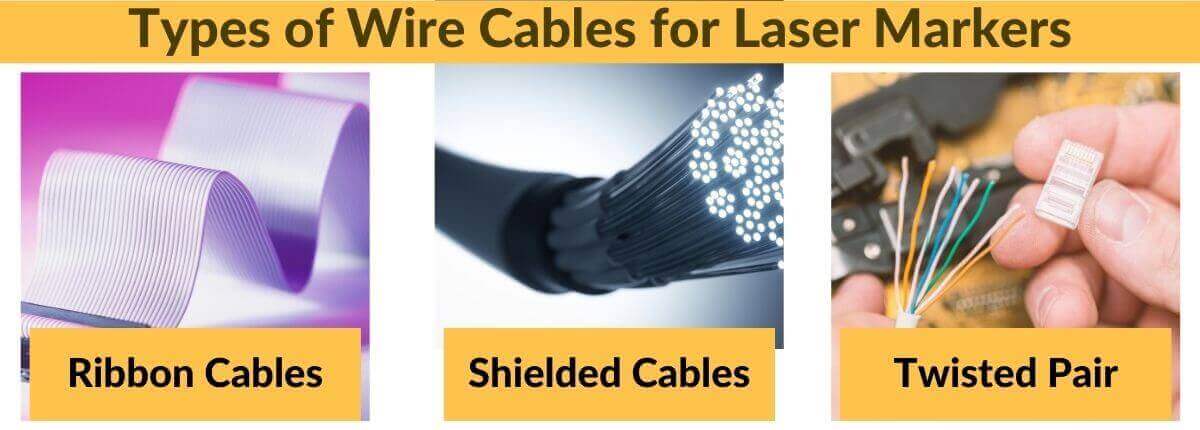
Laser wire engraving machines mark and engrave wires and cables, serving as vital tools in various industries. However, not all types of Cables are compatible with Laser wire identification tools.
Compatible wire cables for Laser wire printing devices include:
Ribbon Electric Cables
Ribbon electric cables, commonly used in electronic devices, are flat and shaped like ribbons. Their compatibility with Laser wire printing devices allows marking them using a laser beam.
The laser marking on ribbon cables achieves precise and easily readable permanent marks.
Shielded Cables
Shielded cables protect against electromagnetic interference in applications. They comprise insulated conductors wrapped in a conductive shield.
Shielded cables are compatible with laser wire marker machines. Because the laser marking process does not affect the shield, and the marking is highly legible and resistant to fading.
Twisted Pair Cables
Twisted pair cables, which consist of two insulated copper wires twisted together, use in telecommunications and networking. Wire identification systems machines can mark twisted pair cables effectively due to their compatibility with the materials used in these cables. The marking process creates a clear, easily readable permanent mark.
Fiber Optics Cables
These optic cables transmit data and telecommunications signals over long distances using a core of one or more optical fibers surrounded by protective coatings.
Fiber optic cables are compatible with laser wire marking machines because the laser marking process does not damage the fibers or the coatings. The marking is precise and highly visible, making it easy to read.
Coaxial Cables
Coaxial cables transmit high-frequency signals and find wide applications in television and telecommunications. They comprise a central conductor surrounded by a dielectric insulator, shield, and outer jacket.
Coaxial cables are compatible with Wire identification systems because the marking process does not damage the shield or the insulator, and the marking is highly legible and resistant to fading.
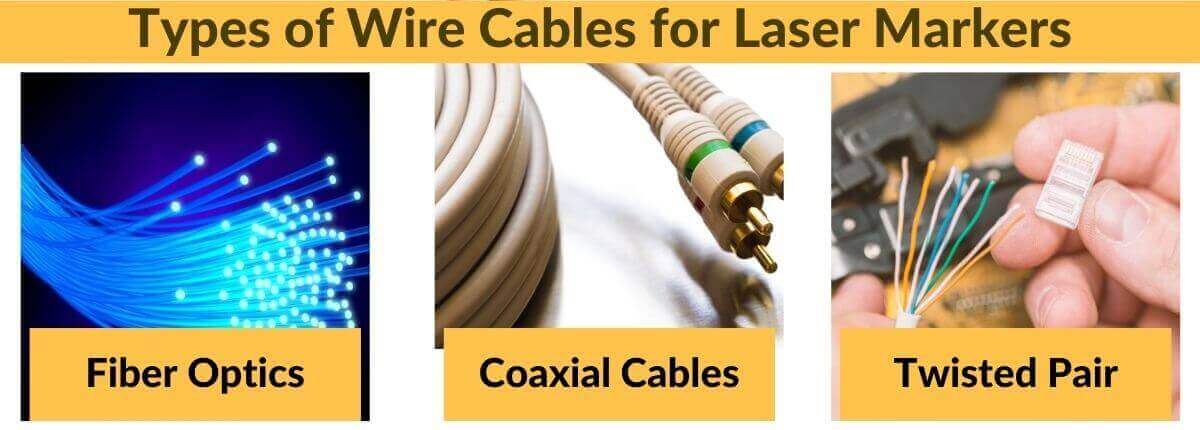
What makes Laser Wire Marking Machines better?
Below are some of the reasons why Wire identification systems are the better choice for industrial applications:
Accuracy
Laser wire marker offers high precision and accuracy in marking wires and cables. The marker machine’s ability to create intricate marks on material surfaces makes it ideal for various applications.
Wire laser mark creates permanent marks that remain legible and easily readable over time.
Versatile and Less Damaging
Wire laser mark can mark various materials, including copper, aluminum, steel, and plastic.
The Laser wire marking, unlike traditional methods, does not damage the material it marks. It effectively labels heat-sensitive materials, making it a versatile tool for various industries.
High Operational Speed
Laser wire marking speeds up and simplifies the process of marking wires and cables by reducing time and labor. The laser beam swiftly creates accurate marks on the material surface upto 300ft/min , surpassing the time required by traditional marking methods.
The Cost of Laser Wire Marking Machines
Although Wire coding machines have a higher initial cost than traditional marking methods, they offer a lower cost per marking. Wire marking automation eliminates the need for consumables like ink, resulting in long-term cost savings for marking wires and cables.
Increased Productivity
Laser wire marking marks materials without physical contact, minimizing the risk of damage. And it enhances productivity by reducing downtime and material waste.
High-Quality Laser Wire Marking Machines
Wire coding machines produce clear, precise, and easily readable high-quality markings. The laser beam enables high-contrast and legible marks, making them suitable for various industrial applications.
How to choose a suitable Laser Wire Marking Machines?
Selecting the appropriate laser wire marker is a crucial investment for industrial businesses. Various factors should be taken into account when choosing a suitable laser wire marker, such as:
Stable and flexible design
Prioritize a sturdy and flexible design when selecting a laser wire marker to ensure smooth and efficient operation, even in challenging industrial settings.
High-speed marking
Speed is an important consideration when choosing a laser wire marker. Look for a machine that offers high-speed marking, as this will reduce the amount of time and labor required for marking wires and cables.
Support 24/7
Choosing a machine capable of continuous 24-hour operation ensures uninterrupted industrial production.
Easy-to-use software
When selecting a laser wire marker, prioritize ease of use. Seek a machine with user-friendly software that is simple to learn and operate.
Industrial use
Ensure that the Laser marking solutions for wires are designed for industrial use, capable of handling various materials, and functioning effectively in harsh industrial environments.
Power and marking area
When considering a laser wire marker, it is crucial to consider the power and marking area. Seek out a machine that provides the appropriate power level for your specific marking requirements and a sufficient marking area that accommodates the size and volume of the wires and cables you need to mark.
Materials
Different laser marking machines and techniques are necessary for labeling different materials.
For example
- When labeling cross-linked ETFE wires, experts recommend utilizing a fiber or UV laser wire marking machine.
- On the other hand, PTFE uses a CO2 laser marking machine.
- In the case of ETFE marking, a fiber laser marking machine is generally preferred.
Applications of Laser Wire Marking Machines
Laser wire marking machines have revolutionized wire marking in industries worldwide. With precision and efficiency, these machines serve the critical purpose of identifying and labeling wires, cables, and harnesses.
Wire marking is critical in ensuring safety, organization, and efficient operation across various industries, from aerospace to telecommunications. Explore the diverse applications of wire coding system and their significance across multiple sectors.
Automotive Industry

In the automotive industry, wire marking is crucial for various reasons. It facilitates the identification and tracking of wires within complex wiring systems, ensuring accurate assembly and maintenance. Wire marking also aids in troubleshooting and repair processes, saving valuable time and resources.
Manufacturers use laser wire marker machines to mark wires and cables in various areas, including engine compartments, wiring harnesses, connectors, and sensors. These machines enable precise labeling of wires with information like part numbers, circuit identification, and color coding, enhancing efficiency and traceability.
Advantages of using laser wire marking machines in automotive manufacturing:
- High-speed marking for efficient production.
- The non-contact process prevents wire damage.
- Permanent and durable markings endure harsh environments.
- Flexibility for customization
- Enhanced traceability and improved troubleshooting
Aerospace Industry
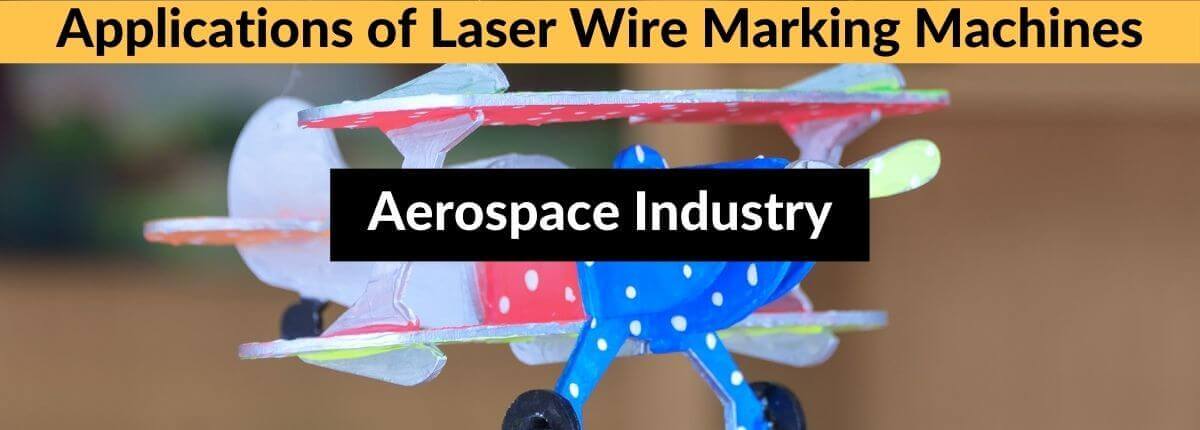
Due to the complex and critical nature of the systems involved, wire marking holds immense importance in the aerospace industry. Accurate wire identification is crucial for safety, maintenance, repairs, and troubleshooting.
Clear and durable wire markings facilitate efficient assembly, reduce errors, and ensure the proper functioning of aircraft systems.
Benefits of laser wire marking machines in aerospace:
- Durable and legible markings for harsh aerospace environments
- Facilitates maintenance and troubleshooting with long-term traceability
- High-speed and precise marking enhance production and assembly processes
- Flexibility to mark various wire materials, sizes, and types
- Enhances safety, reliability, and efficiency in the aerospace industry
Electronics Industry
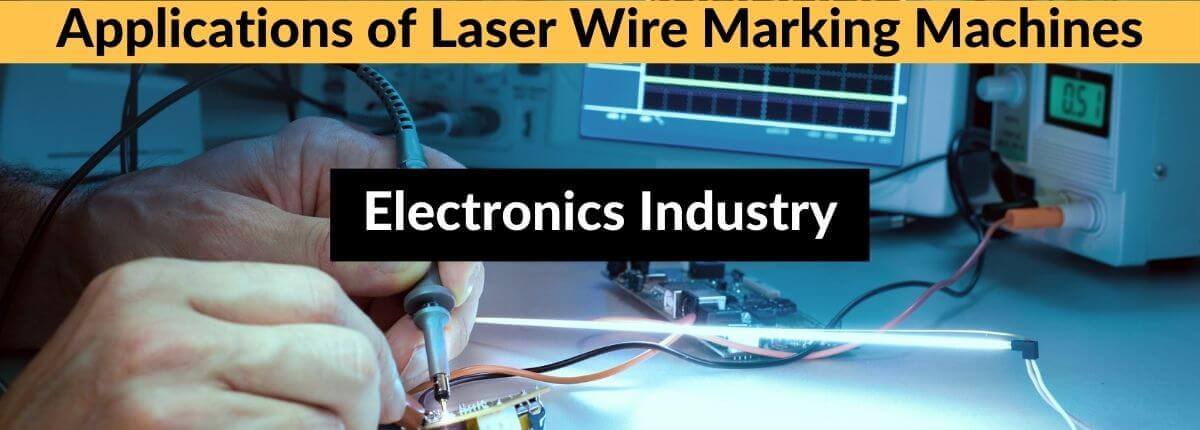
In the dynamic realm of electronics, wire marking poses unique challenges. Discover how precision and durability are essential in overcoming these hurdles and ensuring efficient operations in the industry.
- Shrinking components demand precise and compact wire marking solutions.
- Wire marking must keep pace with rapid assembly line speeds.
- Markings should withstand harsh environments and frequent handling.
- Accurate wire identification is crucial for quality control and troubleshooting.
- Electronics industry standards require clear and readable wire markings.
Specific applications of laser wire marking machines in electronics:
- Enables clear labeling of PCB circuit boards
- It helps in identifying tiny electronics.
- Labeling wires and connectors is accurate and easy to identify.
- Assigns unique numbers to electronic components
- Adds branding elements to electronic devices.
Impact of laser wire marking on electronics production:
- Ensures error-free identification of wires and components
- Automated laser marking speeds up production lines.
- Reduces the need for additional labeling materials and reduces manual labor
- Permanent wire markings minimize the risk of connection errors.
- Laser wire marker machines helps electronics manufacturers meet industry standards and traceability requirements.
Telecommunications Industry
Wire marking is crucial in the telecommunications industry to ensure efficient installation, maintenance, and troubleshooting of complex networks. Clear identification of wires and cables helps streamline operations and minimize errors.
Examples of wire marking applications in the telecommunications sector:
- Enables accurate labeling of cables, facilitating easy identification and organization in large telecommunication infrastructures
- Assists in integrating new coding cables and connections into existing telecommunications networks, simplifying future maintenance and upgrades.
- Marked wires allow technicians to locate faults quickly, reducing downtime and improving response times in resolving network issues.
- Identify specific connections within complex telecommunication equipment, ensuring proper installation and minimizing human error.
- Helps in documentation processes, ensuring compliance with industry standards and regulations and simplifying record-keeping for maintenance and audits.
Advantages of laser wire marking machines in telecommunications:
- Accurate wire identification with fine details
- Resistant to fading and wear over time.
- Enhances productivity and reduces production time.
- Eliminates the risk of damaging delicate wires.
- Accommodates various wire diameters and materials
Comparison with Other Wire Marking Methods
Uncover the optimal wire marking method! Explore a comparison between laser wire marker machines and alternative strategies. Reveal their advantages and disadvantages across different industries.
Hot Stamping
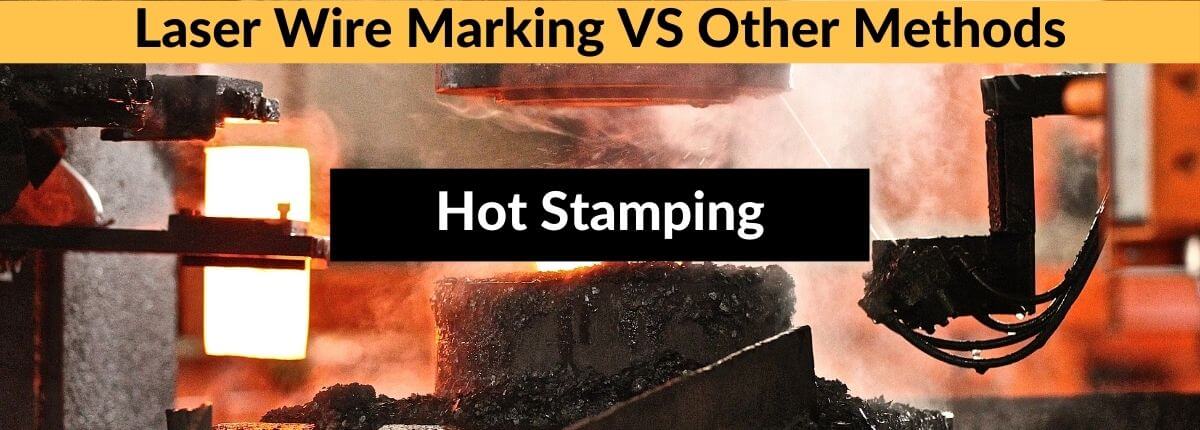
Hot stamping is a wire marking method that uses heat and pressure to transfer a foil or ink onto the wire’s surface. It offers high-speed marking, works well with different wire materials, and is cost-effective for large-scale production.
However, hot stamping has limited marking options, lacks flexibility for complex designs or logos, and may experience smudging or fading over time.
Inkjet Printing
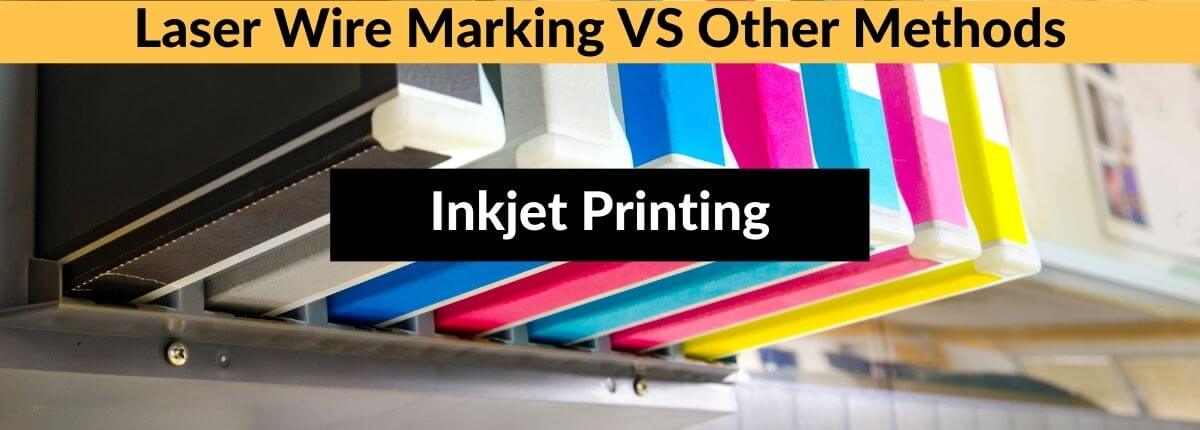
Inkjet printing is a wire marking method that offers versatility in marking different wire materials and sizes. Laser wire marking enables printing detailed designs, logos, and barcodes while allowing for quick and easy changes in label content.
However, inkjet printing is susceptible to smudging or fading if not properly dried or cured. It may also encounter ink compatibility issues with certain wire materials and has a slower marking speed than laser wire marking machines.
Mechanical Engraving
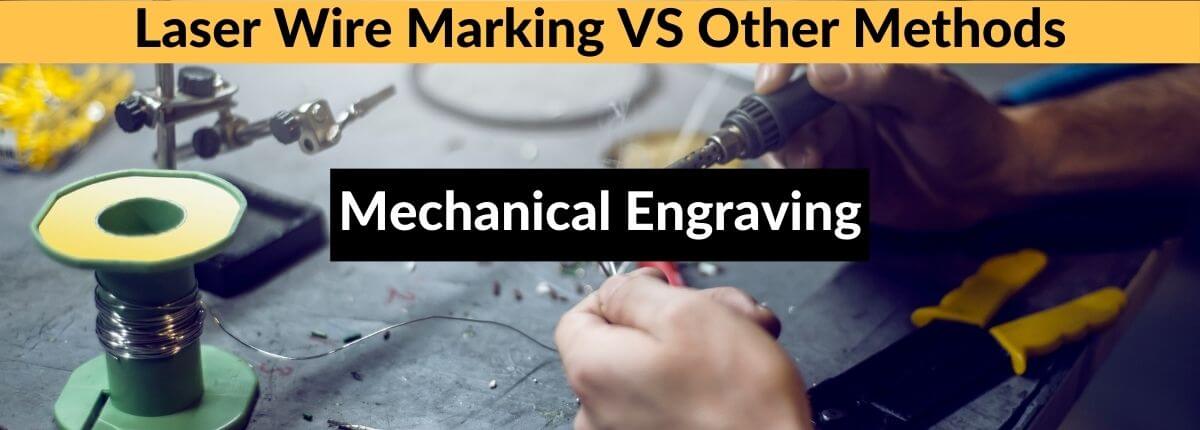
Mechanical engraving is a wire marking method that uses Mechanical tools to create durable and permanent markings. It can mark hard or abrasive wire materials, providing high-quality and precise results.
However, it has limitations in marking complex designs or logos, requires longer setup time for tooling and adjustments, and has higher maintenance requirements than other methods.
Dot Peen marking

Dot Peen marking is a wire marking method that uses a pneumatically driven stylus to create indented marks on the wire surface. Laser wire marking provides durable and readable markings, but it has limitations in marking speed and flexibility for complex designs.
Laser marking machines offer non-contact marking, high precision, and versatility for different wire materials and sizes compared to other methods, such as dot peen marking. However, they involve higher initial investment costs and may require additional precautions for certain wire coatings or materials.
Future Trends and Innovations in Laser Wire marking Machines

As technology rapidly advances, the laser wire marking field embraces new possibilities. Exciting trends and innovations are reshaping wire marking, including enhanced laser systems, automation, integration with data management, and robotic systems.
Stay ahead of the curve as we explore the cutting-edge developments in laser wire marking that are revolutionizing industries worldwide.
Enhanced Laser Systems of Laser wire marking machines
In the realm of laser wire marking, innovation knows no bounds. Enhanced laser systems are revolutionizing the industry, with high-power lasers enabling faster, more precise marking. Fiber lasers offer improved efficiency and versatility, while laser beam shaping techniques ensure unparalleled marking quality. Embrace the future of wire marking.
Automation in Laser Wire Marking
Automation in Laser Wire Marking brings a new era of efficiency and precision. Integrating laser wire engraving machine with robotic systems skyrockets productivity and accuracy. Experience consistent results and witness the future of wire marking unfold with automated laser wire marking systems.
Integration with Data Management Systems
AI-based data management systems integration promises groundbreaking advancements in the future of laser wire marking. By combining laser wire marking machines with intelligent data systems, the industry can achieve unparalleled levels of traceability, error reduction, and process optimization.
Integrated solutions streamline wire marking processes and enable real-time data analysis, quality control, and efficient inventory management. Some examples of data management systems utilized in wire laser mark include AI-powered software platforms that revolutionize wire identification and tracking. Embrace the power of data integration to propel your wire marking operations into the future.
Integration of robotic systems and the Internet of Things (IoT) in Laser wire marking machines
The future of laser wire marking intertwines with integrating robotic systems and the Internet of Things (IoT). Combining laser wire marker with IoT technology enhances automation and enables remote capabilities for wire marking applications.
This integration offers advantages: such as improved precision, increased productivity, and streamlined operations. With the ability to connect wire marking processes to the internet, businesses can optimize their operations, monitor and control marking activities remotely, and achieve greater efficiency in the wire labeling industry.
Conclusion (Laser Wire Marking Machines)
In conclusion, laser wire marking machines offer numerous benefits over traditional wire marking methods. They provide high precision, speed, and efficiency in labeling wires and cables, making them the perfect solution for industries looking to streamline their processes and reduce errors.
When selecting a suitable Laser marker solutions for wires, it is necessary to consider factors such as the wire material, the size, the machine capacity, and the specific industry regulations or standards.
By selecting the appropriate machine, it is possible to produce high-quality, long-lasting marks on various wire and cable materials, making laser wire marking a popular choice for various industrial applications.
FAQs (Frequently Asked Questions)
1. What is Cross-Linked ETFE?
Ans: Cross-linked ETFE exhibits high durability and resists heat, chemicals, and abrasion. When marking this material, ensure the utilization of a laser marker machine capable of producing long-lasting, high-quality marks.
Depending on the nature of the application, both fiber laser marker machines and UV laser wire marker machines can label cross-linked ETFE effectively.
2. What is PTFE?
Ans: PTFE is known for its excellent chemical resistance and high-temperature tolerance. When marking PTFE, a CO2 laser marking machine is typically used. CO2 laser marking machines can produce deep, high-contrast marks on PTFE, which makes them ideal for applications that require critical legibility.
3. What is ETFE?
Ans: ETFE possesses high transparency and excellent electrical insulation properties, establishing it as a renowned fluoropolymer.
Generally, when marking ETFE, experts prefer employing a fiber laser marker machine, which facilitates the production of high-precision marks on the material. Consequently, fiber laser marker machines have gained popularity across various applications.
4. Does MOPA fiber laser enable colorful wire coding for identification?
Ans: Color wire coding by MOPA fiber laser machines enables precise and vibrant marking for easy identification and organization.

